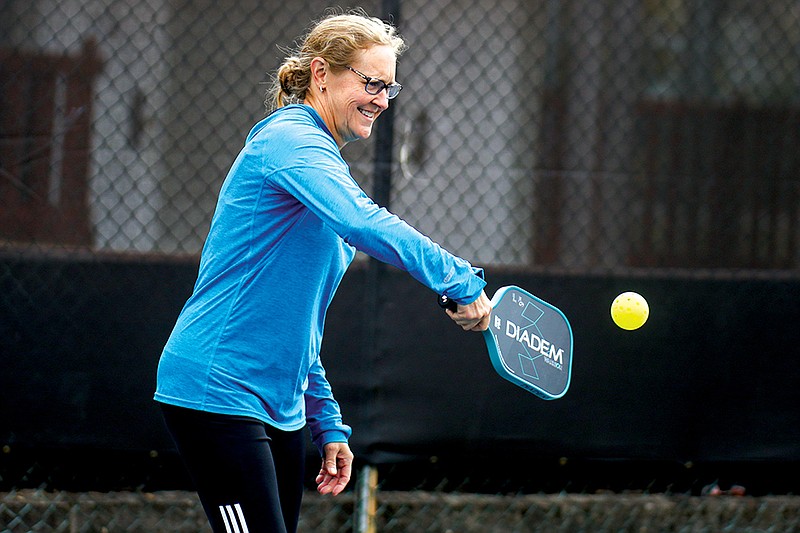From 12 to 99, people across America are getting active with a new favorite sport: pickleball.
While similar to tennis in appearance, this two- or four-person racket game is played on a court one-third the size and with a slightly smaller racket. With a smaller area of ground to cover, it is not quite as labor intensive as tennis, but that does not mean you can escape the risk of injury as a player.
Andrea Abercrombie, owner of River City Physical Therapy in Red Bank, says she's been treating more patients for pickleball-related injuries.
"What I've treated more than anything is knee pain or ligament injuries in the knee," she says. "As well as what has always been referred to as tennis elbow -- sometimes I call it pickleball elbow. It's an overuse injury."
Abercrombie, a pickleball player herself, says flexibility, strengthening and strategy are key factors in keeping your body ready to play.
"I'm a big proponent of strengthening your butt muscles and your core," Abercrombie says. "There's a muscle in our hips called your gluteus medius. That muscle is essential for lateral movement and stability of your knee."
Moving and cutting side to side is a good majority of gameplay in pickleball, so building strength to move that way is essential. Simply working out at the gym or playing the game, though, is not enough to strengthen that muscle. Specific exercises to target it are crucial.
One effective exercise to strengthen the gluteus medius is the lateral band walk.
Abercrombie also says that warming up your body and staying flexible are important for avoiding injury. Stretching can be a great way to improve flexibility, but Abercrombie says she prefers warm-up exercises.
"I like to go out and do some drills to warm my body up, warm my shoulders up, warm my knees up," Abercrombie says. "It's personal for everybody. But I think some form of movement before you start playing is better for injury prevention."
Her go-to warm-up for pickleball is a move called "dinking."
In the game, there is a "kitchen," or non-volley zone, the space which extends 7 feet from both sides of the net. Abercrombie will run drills with a partner, slowly hitting the ball back and forth across that zone, causing her to reach, move side to side, work her forehand and backhand to ease herself into playing. She will then hit some longer shots to get her shoulder ready. All of these practices help to warm up the muscles and joints.
The last piece to the puzzle, she says, is honing your strategy and skill during gameplay.
"If you can be strategic in where you place the ball, you're not having to run around like crazy," Abercrombie says. "When I play with older people that don't move as well, if they're good at placing the ball, they can beat anybody. You don't have to be so fast."
Abercrombie is also an advocate for simply taking care of your body. If you happen to be injured, make sure to take the time away from gameplay to heal.
"People have an injury or a naggy 'itis' type situation, and we tend to think, as athletes, that it will go away," Abercrombie says. "Then we're dealing with something for three months, and it's still not better. Sometimes, the sooner you get help with something like that, the less time it takes for your body to heal."
No matter your age or athletic ability, Abercrombie stands firm that anyone can play pickleball -- and do so without getting injured.
"The more flexible you stay," Abercrombie says, "the stronger your muscles are, the better your joints perform, the better you move, the less injuries you have."
Learn the lateral band walk
Physical Therapist Andrea Abercrombie recommends the lateral band walk to help strengthen the gluteus medius, a muscle that helps with hip movement. Almost everyone has a weak gluteus medius, she says, and that can lead to a knee injury on the pickleball court. Try this sequence of moves to help strengthen the muscle.
Tie an exercise band just above your knees and stand with your feet hip-width apart.
Push your hips back like you're going to sit down, and be sure to keep your knees behind your toes the whole time.
Keeping your butt back and knees behind toes, take a step to the left.
As you step, shift your weight to your left foot. Do this several times, then repeat, taking side steps to the right. For an added challenge, move the band just above your ankles. Continue the movements 3-4 minutes, or until you feel the burn.




